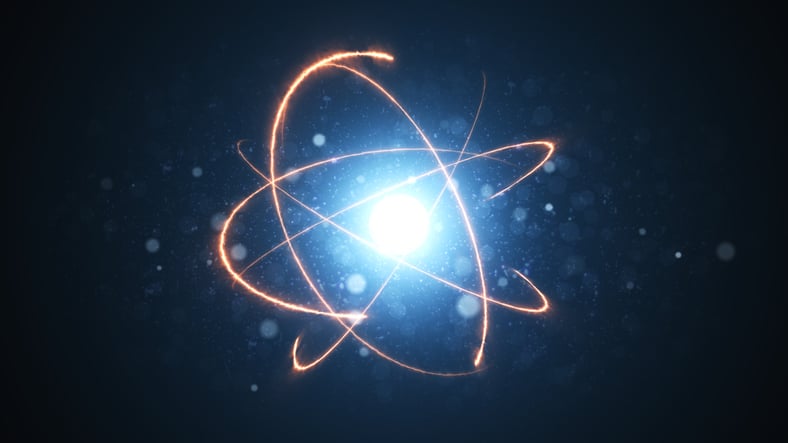Tuesday, January 3, 2023
This is how work is being done on nuclear fusion research, an alternative with the promise of inexhaustible energy that is attracting more and more investors.
Colpisa
The promise of a clean, safe and inexhaustible source of energy in the not too distant future is now closer to becoming a reality following an announcement by researchers at Lawrence Livermore National Laboratory (LLNL) in the United States. The team dedicated to obtaining energy from the process of nuclear fusion, which mimics the sun (and stars), announced that they had generated more energy with this process than they had put into it, which had never been achieved since research into this energy source began in the 1960s.
Once this line was crossed, they said, the time was closer when energy production from this source would be sustainable enough to mark the energy map of the not-so-distant future. How did we get here? What is the process? Who is currently involved in this research worldwide?
In the midst of the energy crisis and with a clear purpose of decarbonizing the economy, new ways of generating energy are being sought to contribute to a more efficient and sustainable energy system, making up for the weaknesses that other sources such as renewables may have.
One of the new fields of research focuses on nuclear fusion energy, which is different from fission energy (which is used in today's nuclear power plants) and has hydrogen as its main component.
What is nuclear fusion?
If you simplify it a lot, you can say that researchers are looking for a way to emulate the process that stars (like our Sun) follow to generate energy, but on Earth. In other words, instead of splitting, which is the process with current nuclear energy, it would be a matter of joining very light nuclei, of hydrogen, to produce a somewhat heavier one: helium. This is one of the major differences with respect to fission nuclear power plants, which use heavier atoms.
"Joining these atoms, which seems so complicated for us here on Earth, is something that the stars are constantly doing," explained Dr. Isabel García Cortés, from the National Fusion Laboratory (CIEMAT).
"The sun is constantly fusing light elements," García Cortés continued, "to create slightly heavier elements. That's why we have so much energy on Earth coming from the Sun." This is something we want to imitate, in a controlled manner, so that in the future we can build a power plant that, thanks to nuclear fusion, can supply energy to the grid.

How is energy obtained in fusion?
For this purpose, hydrogen atoms are used. This omnipresent chemical element gives it the characteristic of being almost like an inexhaustible fuel.
Getting these 'stars' on earth (these nuclear fusion power plants) is very difficult technologically speaking. "We are investigating how to handle the fuel, which is a gas, at very high temperatures. The sun, as it is very heavy, fuses atoms through pressure due to gravitational attraction. As they have no space left, they begin to pull together due to gravitational pressure. We cannot replicate this on Earth," García Cortés explained.
To achieve the temperature at which the atoms eventually fuse, the researchers handle the fuel, which is called plasma, with magnetic fields (something they call 'magnetic confinement').
One of the main lines of research is working with magnetic bottles (which have very powerful magnets) where this fuel can be controlled. "There is enough time for the nucleus to fuse," stated the CIEMAT researcher.
What is the main problem to be resolved?
Although at first it seemed that with these small-sized magnetic bottles it would be possible to have controlled fusion reactions, the plasma behaves unexpectedly. "It tries to escape from that magnetic wall, which adds technological complexity because we need very large machines to control the fuel well," García Cortés explained.
It should be noted that the environment where fusion takes place must be a high vacuum so that hydrogen cannot escape and other chemical elements cannot enter, since nitrogen or oxygen, which are present in the air, entering the system can shut down the fusion process.
The construction of the reactors is impressive.
How to manage to all this complexity is something that is being carried out in ITER, where CIEMAT collaborates with other research agencies.
According to Isabel García Cortés, the challenge facing this large laboratory is to demonstrate the scientific feasibility of fusion as an energy source. "The next step would be to build a reactor demonstrator that seeks to make it profitable. In other words, where much more energy is produced in the reactor than is consumed," given that to do this whole process a lot of energy needs to be spent for now. This will open the door to the creation of these new nuclear fusion power plants.
Although ITER is the main leading research center in this field, the announcement of this milestone has ultimately come from another institution, as mentioned at the beginning.
Why is it considered the energy of the future?
Despite everything, this researcher asserts that it makes all the sense in the world to allocate considerable investments to this type of projects, as requested by U.S. scientists, which has been joined by a large part of the international scientific community, after having signed the aforementioned milestone.
With the energy crisis that we are experiencing, the depletion of fossil fuels, and the temporary nature of renewables, all energy sources will be necessary," the CIEMAT expert stated. If nuclear fusion ends up being one of them, that would be wonderful. This does not mean that it will solve all the planet's energy problems, but it could play an important role in the energy mix between renewables and other new ones as they emerge."
Although nuclear fusion is not considered strictly renewable, it does not have the problem of high-level radioactive waste like today's fission power plants, according to the expert.
Although, as we have said, nuclear fusion energy is not yet a reality, the fact is that its research and development is attracting investment, both from public and private funds, in Europe as well as in the United States, Korea, China and Japan.
Isabel García Cortés believes that it will be several decades before we can see a plant like this in operation. However, she noted that everything depends on the volume of this investment.
"There are several companies that are studying different models of making this plasma confinement alternative to the general line that has been followed, which focuses on this magnetic bottle or a magnetic confinement machine," she explained. Something that could shorten these timeframes, reduce the cost, or size of the plants. "All initiatives are welcome, because experiments are costly and we learn from everyone," she stressed.
¿Te ha parecido interesante?





